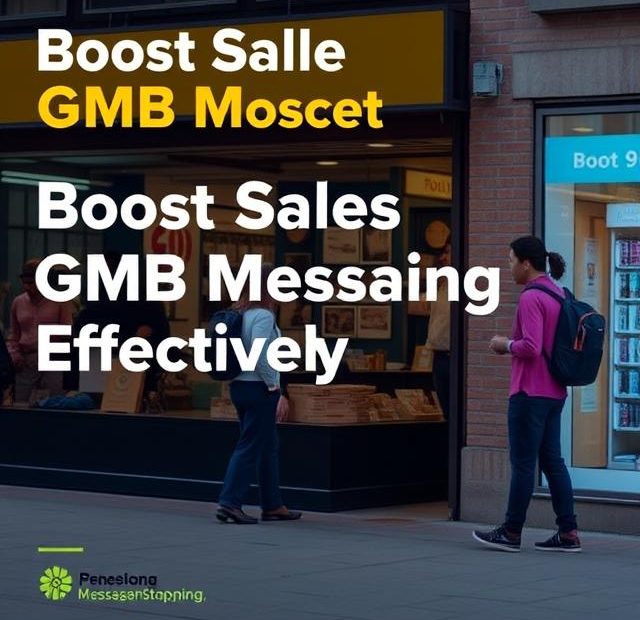In today’s digital-first landscape, local businesses need more than just a listing on Google—they need interaction. One underutilized feature that can significantly boost customer engagement and drive conversions is GMB Messaging. If you’re not using it yet, you’re missing out on a powerful tool to connect with potential customers in real-time.
In this article, we’ll break down how GMB Messaging works, why it matters, and the best strategies to use it for increasing customer conversions.
What is GMB Messaging?
GMB Messaging, part of your Google Business Profile (formerly Google My Business), allows potential customers to send direct messages to your business straight from your listing in Google Search or Google Maps. Once enabled, a “Message” button appears on your profile, making it easier for customers to get in touch without navigating to your website.
Why GMB Messaging Matters for Conversions
Think of GMB Messaging as your digital front desk. It offers:
-
Instant communication: Customers can ask questions and get quick answers.
-
Improved trust: Fast responses make your business appear reliable and helpful.
-
Increased lead capture: Conversations convert more effectively than clicks.
-
Reduced friction: Messaging is easy for users and reduces the steps needed to make a purchase or book a service.
According to Google, businesses that respond quickly via messaging see higher engagement rates and better customer satisfaction.
Setting Up GMB Messaging
Getting started is simple:
-
Sign in to your Google Business Profile account.
-
Click “Messages” on the left menu.
-
Enable messaging by following the prompts.
-
Install the Google Maps app if managing messages via mobile.
-
Set up automated welcome messages to greet users instantly.
You can assign team members or use tools like Google’s Business Messages API or third-party apps to manage the inbox efficiently.
Best Practices to Use GMB Messaging for Conversions
Now that you’re set up, let’s explore proven techniques to turn messages into money.
1. Respond Quickly
Speed matters. Google may pause your messaging feature if you consistently take longer than 24 hours to reply. Aim for under 5 minutes. Use notifications and mobile apps to stay alert.
2. Use Welcome Messages Wisely
Your auto-response sets the tone. Make it warm and informative. Example:
“Hi there! Thanks for reaching out to [Your Business Name]. How can we help you today?”
Include business hours or FAQ links if appropriate.
3. Qualify Leads with Questions
Ask simple, friendly questions to understand intent:
-
“What service are you looking for?”
-
“When would you like to schedule your appointment?”
This turns passive inquiries into active sales conversations.
4. Offer Promotions Through Messaging
You can increase conversion rates by offering a discount or incentive in the chat:
“Thanks for contacting us! Just for you—mention this chat and get 10% off your first service!”
Limited-time offers can add urgency.
5. Guide the Customer Journey
Don’t leave customers wondering what to do next. Lead them to take action:
-
Share booking links.
-
Offer directions or operating hours.
-
Suggest services based on their query.
Every message should drive the conversation toward a goal.
6. Maintain a Professional Yet Friendly Tone
While the platform feels casual, always be professional. Grammar, spelling, and tone reflect your brand.
7. Track and Analyze Conversations
Use tools to track:
-
Response time
-
Conversion outcomes
-
Common inquiries
Insights from your GMB Messaging activity can inform FAQs, ad copy, and even service offerings.
Common Mistakes to Avoid
While GMB Messaging is simple to use, avoid these pitfalls:
-
Ignoring messages: Leads go cold fast—respond quickly!
-
Being too robotic: Automated replies are good, but real human interaction wins trust.
-
Overloading messages with info: Keep it short, direct, and helpful.
-
Using it outside business hours without notice: Set clear expectations if you’re offline.
Advanced Tactics for Power Users
If you’re ready to go further, here are advanced strategies:
-
Use Chatbots: Integrate tools like Podium or Birdeye to automate FAQs and collect lead info.
-
Add Messaging CTA in Local Ads: Encourage messaging in Google Local Service Ads.
-
Segment Messages by Intent: Create templates for common questions—pricing, hours, booking, etc.
The more seamless you make the interaction, the higher your chance of converting.
Final Thoughts
GMB Messaging is not just a convenience feature—it’s a conversion engine. When used effectively, it bridges the gap between interest and action, helping businesses respond to customers quickly, guide them with helpful information, and ultimately turn those conversations into revenue.
Whether you’re a local plumber, boutique owner, or service provider, using GMB Messaging strategically can lead to better customer experiences and higher sales. It’s free, simple, and surprisingly powerful—so start using it today!
Also, you can learn more about Local SEO for HVAC here.
